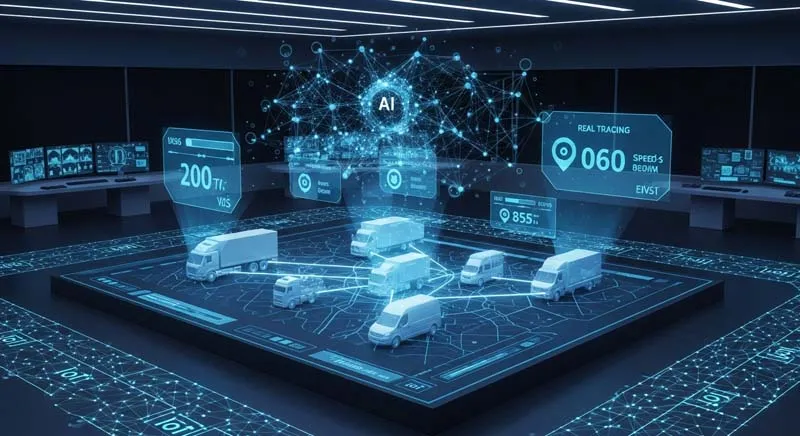Agricultural IoT is reshaping the future of farming by transforming traditional production into a digital and intelligent ecosystem. As climate challenges, resource shortages, and global food demands intensify, real-time data has become essential for more efficient and sustainable agriculture. With the deployment of China Telecom’s RISC-V modules, county-level farmland monitoring now achieves 35% effective coverage, and this system has already reduced irrigation waste by nearly 20%. Consequently, data-driven farming is shifting from concept to reality.

1. Why Data Is Now the Most Valuable Resource in Modern Agriculture
For many years, farmers relied on experience and observation. Decisions lacked real-time insights, and field checks required constant manual effort. However, shifting demographics and rising labor costs highlight the limitations of this approach. Therefore, agriculture urgently needs tools that provide visibility, accuracy, and consistency.
Agricultural IoT brings structure to farmland data. As a result, farmers gain a real-time understanding of soil conditions, water resources, and crop needs. RISC-V modules enhance this shift by offering affordable, stable, and scalable monitoring capabilities.
2. How RISC-V Modules Strengthen the Sensing Layer of Agricultural IoT
China Telecom’s RISC-V module offers several key advantages. It uses low power, works reliably outdoors, and supports flexible customization for diverse agricultural environments. Moreover, it ensures stable wireless connectivity across large rural landscapes.
Its sensing capabilities include:
- Real-time monitoring of soil moisture, temperature, and salinity
- Continuous water-source tracking, including pH levels and flow rates
- Multi-point sensing that forms a unified, cloud-connected data network
Consequently, these modules turn scattered measurements into a dynamic system that transforms farmland from passive land into an active data source.

3. The Power of 35% Coverage: Agriculture Begins to See Its Own Patterns
Although 35% coverage may seem modest, it marks a key threshold for actionable insights. At this level, Agricultural IoT can detect regional patterns instead of relying on isolated snapshots. Therefore, irrigation, fertilization, and resource allocation become significantly more precise.
Benefits of reaching 35% coverage include:
- Creation of regional farmland models
- More accurate irrigation based on soil-moisture thresholds
- Around 20% reduction in unnecessary water use
- Better decision-making and fewer field inspections
Thus, data begins to function like a new type of fertilizer—one that drives efficiency and sustainability.
4. Practical Use Cases: Efficiency From Farmland to County-Level Management
Agricultural IoT brings value not only to farmers but also to local agricultural authorities.
Smart Irrigation
Soil sensors trigger water valves only when needed. As a result, irrigation becomes intentional instead of routine.

Water-Source Monitoring and Alerts
The system detects pollutants, blockages, and drought risks in real time. Therefore, farmland becomes more resilient to environmental changes.
Digital Dashboards for Agricultural Management
Local agencies access visual dashboards that display real-time regional crop and soil data. Consequently, decision-making becomes more evidence-based.
These improvements highlight how Agricultural IoT enhances both on-field efficiency and broader governance capacity.
5. Economic and Environmental Benefits of Agricultural IoT
The impact of Agricultural IoT is both measurable and meaningful.
- 20% less irrigation waste, reducing water and energy costs
- Higher crop quality, supported by continuous data
- Better management efficiency, especially for county-level authorities
- More sustainable resource use, leading to greener agricultural practices
Therefore, farmers gain greater control, and local governments achieve better oversight.
6. The Path From 35% to 80%: Scaling Smart Agriculture Nationwide
Despite significant progress, full Agricultural IoT coverage requires continued improvements. Farmers need better digital literacy. Devices must remain stable and easier to maintain. In addition, platforms must share data more effectively, and AI-powered models need deeper agricultural adaptation.
However, as communication technology advances and hardware prices fall, large-scale Agricultural IoT coverage will accelerate. Consequently, more counties will benefit from predictive analytics, automated irrigation, and comprehensive farmland monitoring.
Eventually, data will become an invisible nutrient that strengthens every part of the agricultural process.

7. Agricultural IoT Is Guiding Farming Toward a Smarter Future
Agricultural IoT is helping agriculture evolve into a more efficient, sustainable, and intelligent system. The current 35% coverage marks an important beginning, showing how data can lead to measurable improvements in irrigation, resource use, and decision-making. As IoT devices, connectivity, and AI advance together, future farming will rely less on intuition and more on real-time insights.
In the ongoing global push toward connected intelligence, many companies are contributing to the growth of IoT. EELINK Communication is one of them. With more than 20 years of experience in wireless communication and IoT hardware development, EELINK provides temperature-monitoring platforms, asset-tracking devices, vehicle-security systems, insurance-telematics solutions, and cold-chain management technologies. Moreover, the company is committed to innovation and to helping customers achieve reliable, efficient, and scalable IoT applications. Through continuous technological advancement, EELINK Communication supports the broader vision of a fully connected world.
